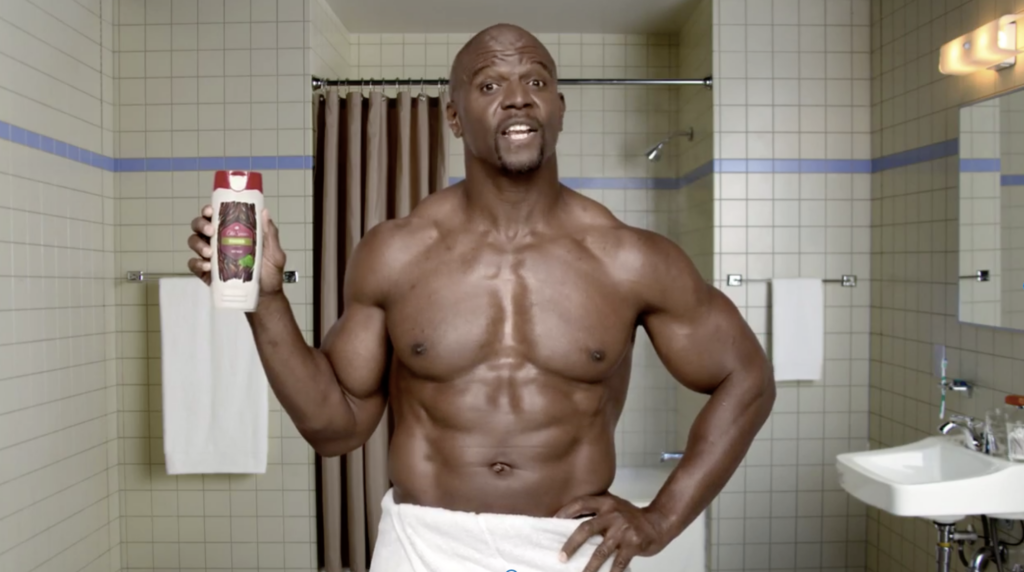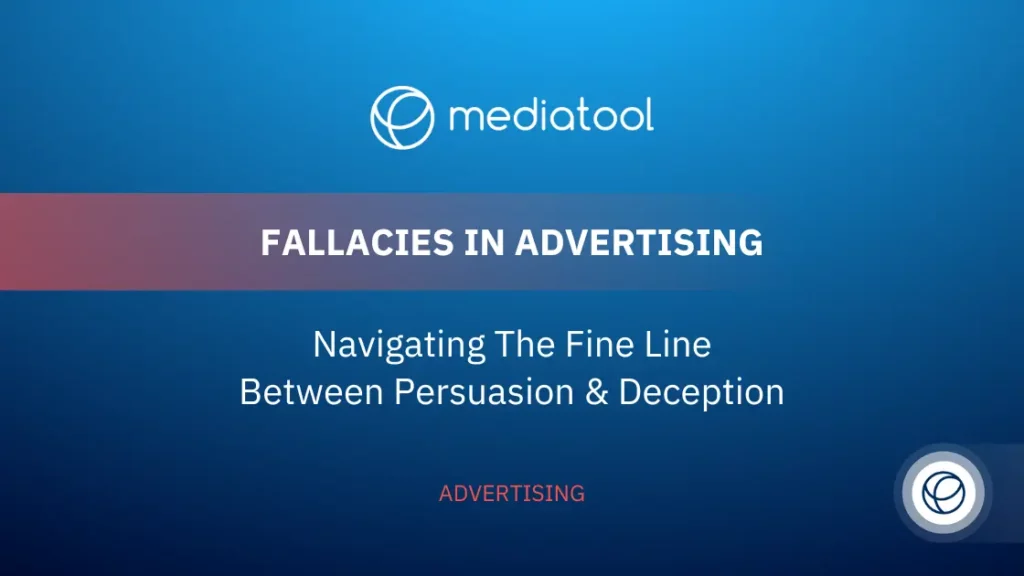Fallacies in advertising represent a critical crossroads between effective persuasion and potential consumer mistrust. This balancing act challenges marketers to distinguish between engaging content and misleading tactics. However, there’s a strategic approach to navigating this dilemma.
Marketers can create campaigns that captivate audiences by understanding and ethically applying various fallacies while maintaining honesty and integrity.
This article will get into the different types of fallacies, offering insights into their use and impact on advertising strategies. Through this exploration, we aim to equip marketers with the knowledge to harness the power of persuasive communication responsibly, enhancing brand trust and fostering a positive consumer relationship.
What are Advertising Fallacies?
Have you ever encountered ads that promise more than what seems realistic? Often, this is the result of advertising fallacies. These are mistakes in reasoning that advertisers employ to convince consumers to act in their favor. They are strategies used in advertising campaigns designed to provoke a reaction like, “I must have that!” even if it’s unnecessary.
Whether it’s the suggestion that a behavior is universal (bandwagon fallacy) or leveraging a celebrity endorsement to bolster the appeal of a product (authority fallacy), these tactics are widespread.
Advertising fallacies encompass a range of flawed arguments, from faulty reasoning to false cause fallacies. They’re common in advertising practices, aiming to manipulate consumer emotions and perceptions without substantial evidence to back their claims.
These fallacies seek to influence potential customers through various advertising appeals by suggesting a specific emotional response or creating fear over health risks without sound reasoning.
Why do Advertisers Use Fallacies?
The core aim of advertisers is persuasion. Their primary objective is to convince you to purchase their offerings. A mere presentation of facts often falls short of achieving this. Instead, fallacies play on emotions, distort perceptions, and exploit cognitive biases to make their propositions more enticing. They are deceptive techniques woven into advertising campaigns to make them more appealing.
Nearly 59% of consumers report being swayed by claims in advertisements that later proved to be false, highlighting the delicate balance between persuasive advertising and maintaining consumer trust.
Advertisers rely on these fallacies to manipulate consumers, employing authority figures and celebrity endorsements without always providing evidence to support their claims. This approach can lead to misleading advertising appeals and ad attempts that leverage common advertising fallacies.
These tactics can generate an emotional response from the audience, aiming to sway their purchasing decisions based on fallacious reasoning rather than factual accuracy.
By identifying these fallacies, consumers can become more aware of the manipulative and often deceptive techniques used in some advertising practices. Recognizing these tactics is crucial for consumers to make informed decisions and not be swayed by flawed arguments or fallacious tactics that suggest a product or service is more beneficial or necessary than it truly is.
Awareness and understanding of these common fallacies can empower consumers to question the claims made in ads commonly seen across various media and to demand more transparent and evidence-based advertising appeals.
Are Logical Fallacies Effective in Advertising?
Short answer: Yes. Long answer: Absolutely, yes. Logical fallacies are highly effective because they directly engage with our emotions, fears, and desires. They can convince you that a weight loss supplement is the only solution due to the use of scare tactics or persuade you to consider a product by presenting a false dilemma.
These fallacies influence how we perceive information, often leading us to draw conclusions or make decisions that favor the advertiser’s goals without fully realizing the influence behind our choices.
12 Fallacies in Advertising
Advertising employs a variety of persuasive techniques to influence consumer behavior. Most common logical fallacies are notably effective, manipulating our reasoning subtly. Let’s dive deeper into each type of fallacy, providing real-world examples from brands to illustrate how they are used to persuade consumers.
1. Ad Hominem Fallacy
The ad hominem fallacy occurs when an ad campaign attacks a competitor rather than highlighting its benefits. A classic example is Apple’s “Mac vs. PC” ads, where the PC character was depicted as less efficient and less cool compared to the Mac character, focusing on the competitor’s perceived weaknesses rather than the product’s strengths. This fallacy suggests that the competitor’s product is inferior, diverting attention from an actual comparison of features.

2. Authority Fallacy
Ads often employ the authority fallacy by featuring celebrities or authority figures to endorse a particular product, implying that their approval or use of the product validates its quality.
Old Spice body wash famously used actor and former football player Terry Crews in their advertisements, suggesting that if it’s good enough for Crews, it should be good enough for the average consumer. This appeal to an authority figure leverages the celebrity’s influence to persuade consumers.

3. Bandwagon Fallacy
The bandwagon fallacy plays on the audience’s desire to belong, suggesting that a product is popular and widely used, so you should use it, too. An example is using social media metrics in ads, such as “Join millions of users,” which creates a sense of widespread acceptance and popularity, encouraging individuals to follow the crowd.
4. False Dilemma Fallacy
This fallacy presents consumers with limited options, often an either/or scenario, forcing a choice between two extremes. A diet product might use this tactic by suggesting it’s either their solution or failure in weight loss, ignoring other viable methods or the complexity of weight management. This generalized point simplifies the decision-making process but misleads by not acknowledging other options.
5. Slippery Slope Fallacy
Ads using the slippery slope fallacy suggest that one choice will lead to negative outcomes. Insurance companies might imply that failing to choose their coverage could lead to financial ruin, employing a fallacious tactic that exaggerates potential consequences to create fear and manipulate consumers’ emotions.
6. Hasty Generalization Fallacy
A hasty generalization occurs when an ad makes a broad claim based on limited evidence. “9 out of 10 dentists recommend” is a phrase often heard in toothpaste commercials, which may not accurately represent broader professional consensus but persuades consumers by suggesting widespread expert approval.

7. Post Hoc Fallacy
This logical fallacy implies causation from correlation, as seen in ads that attribute success or improvement to their product without clear evidence. For example, a skincare brand might claim its cream is responsible for improved skin health in users without acknowledging other factors that could have contributed to the results.
8. Straw Man Fallacy
In this fallacy, an advertisement misrepresents a competitor’s product to make it easier to attack. For example, a cleaning product might exaggerate the inefficacy of traditional cleaning methods to highlight its own product’s benefits, simplifying the particular subject matter to strengthen its position.
9. Red Herring Fallacy
Ads employing the red herring fallacy distract from the main issue with irrelevant information. A car advertisement might focus on the vehicle’s entertainment system while ignoring its poor fuel efficiency, steering potential customers away from more pertinent concerns.
10. Emotional Appeal
Many ad campaigns directly target consumers’ emotions, bypassing logical reasoning. Charities use images of animals in distress or children in need to evoke empathy and prompt donations, leveraging emotional response over a detailed discussion of how contributions are used.
11. Scare Tactics
Similar to the appeal to emotion, scare tactics create fear to compel action. Health products often claim to reduce the risk of serious diseases, suggesting without substantial evidence that failing to use their product increases health risks. This marketing technique manipulates consumers’ fear of adverse outcomes to drive sales.
12. False Authority
When ads present an individual as an expert without relevant expertise, they use a false authority fallacy. For example, a celebrity might endorse a financial product without any background in finance, suggesting their endorsement is a sufficient reason to trust the product.
This fallacious tactic relies on the authority figure’s popularity rather than actual knowledge or experience related to the product.
These fallacies play a specific role in advertising, designed to influence consumer decisions. By understanding and identifying these common fallacies, consumers can critically evaluate ad campaigns and make more informed choices, resisting the persuasive techniques that aim to manipulate their perceptions and actions.
Conclusion
In wrapping up this exploration of advertising fallacies, marketers need to recognize the power and responsibility of understanding these persuasive techniques. While fallacies like the false cause fallacy can be tempting shortcuts to influence consumer behavior, they also risk undermining trust and credibility in the long run.
As marketers, the challenge lies not in avoiding these tactics altogether but in applying them with ethical consideration and transparency.
The strategic use of advertising fallacies can make ad campaigns more compelling and memorable. However, it’s crucial to balance persuasive effectiveness with honesty and respect for the consumer’s intelligence.
Professionals can build lasting relationships with their audience grounded in trust and mutual respect by fostering a marketing environment where truth and clarity prevail. Ultimately, the most successful marketing strategies are not only persuading consumers but also empowering them with genuine reasons to believe in and choose a product or service.





